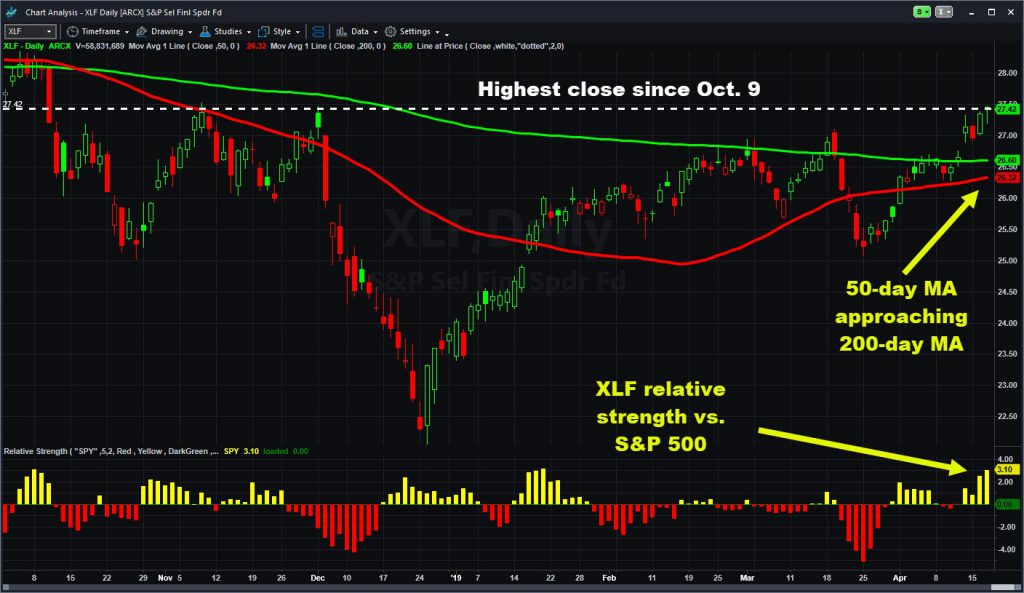Financial stocks are on the move as changing sentiment draws money back to a forgotten corner of the market.
The SPDR Financial ETF (XLF) closed at a six-month high yesterday, and has risen 3.5 percent in the last week. That’s the biggest gain for any of the 11 major sector funds over the period.
What’s behind the move? At least three factors seem to be at work: earnings, interest rates and economic growth.
First, quarterly results have been either strong or “good enough.” Banks like
JPMorgan Chase (JPM), Citigroup (C) and PNC Financial (PNC) rallied after beating profit forecasts. Bank of America (BAC) also clawed its way back from an initial drop on less-than-stellar numbers.
Apart from well-known lenders, plenty of other firms have good news. Brokerage Morgan Stanley (MS), for instance, surprised investors accustomed to mediocre quarterly results. Ditto for mutual-fund giant Blackrock (BLK), which halted an exodus of client funds to beat estimates across the board.
Insurance company Progressive (PGR) also surged on strong numbers.
Interest Rates Move Higher
Second, interest rates are moving higher. That can lift profits for firms in the sector, especially life insurers like Prudential Financial (PRU).
To understand why rates are climbing, it’s important to remember how aggressively the Federal Reserve pushed them down. As reported on Market Insights, Jerome Powell engineered a sharp turn from hawkish to dovish at the U.S. central bank between November and February.
That caused a big knee-jerk of money into bonds last month, driving Treasury yields to their lowest level in over a year. (Remember yields move down when people buy bonds.)

At the time, everyone was worried about a slower economy. Forecasters shook their heads about weaker growth and the media started whispering the “R” word (recession). Financials lagged as a result.
But then, as soon as the gloom seemed greatest, data started improving. Manufacturing numbers and construction spending surprised the upside. Non-farm payrolls beat estimates, followed by jobless claims dipping more than expected to a new 50-year low.
Even outside the U.S., things have looked better. In China, first quarter gross domestic product and retail sales beat estimates. In Europe, construction and the German Zew sentiment index also left the pessimists with little ammunition.
That kind of brighter economic news can help financials by lifting interest rates. Faster growth also tends to increase business activity for banks.
Major Holdings in the XLF
Sixty of XLF’s 67 companies have advanced in the last five sessions. Let’s take a look at the biggest names:
- Berkshire Hathaway (BRK.B): Mostly an insurance firm, Warren Buffett’s financial colossus also owns companies like Burlington Northern Santa Fe railroad, Benjamin Moore paints and Dairy Queen ice cream.
- JPMorgan Chase (JPM): The biggest lender in the U.S., and one of the top securities firms on Wall Street.
- Bank of America (BAC): The country’s No. 2 lender is also the parent of Merrill Lynch.
- Wells Fargo (WFC): The country’s fourth-biggest bank continues to struggle with the fallout from abusive sales practices in 2016.
- Citigroup (C): The sprawling financial giant also runs the third-largest bank in the U.S. It ranks below WFC in market cap because of its bigger debt load.
This post is part of our regular “ETF of the week” series. It focuses on exchange-traded funds with interesting news or price changes.




























